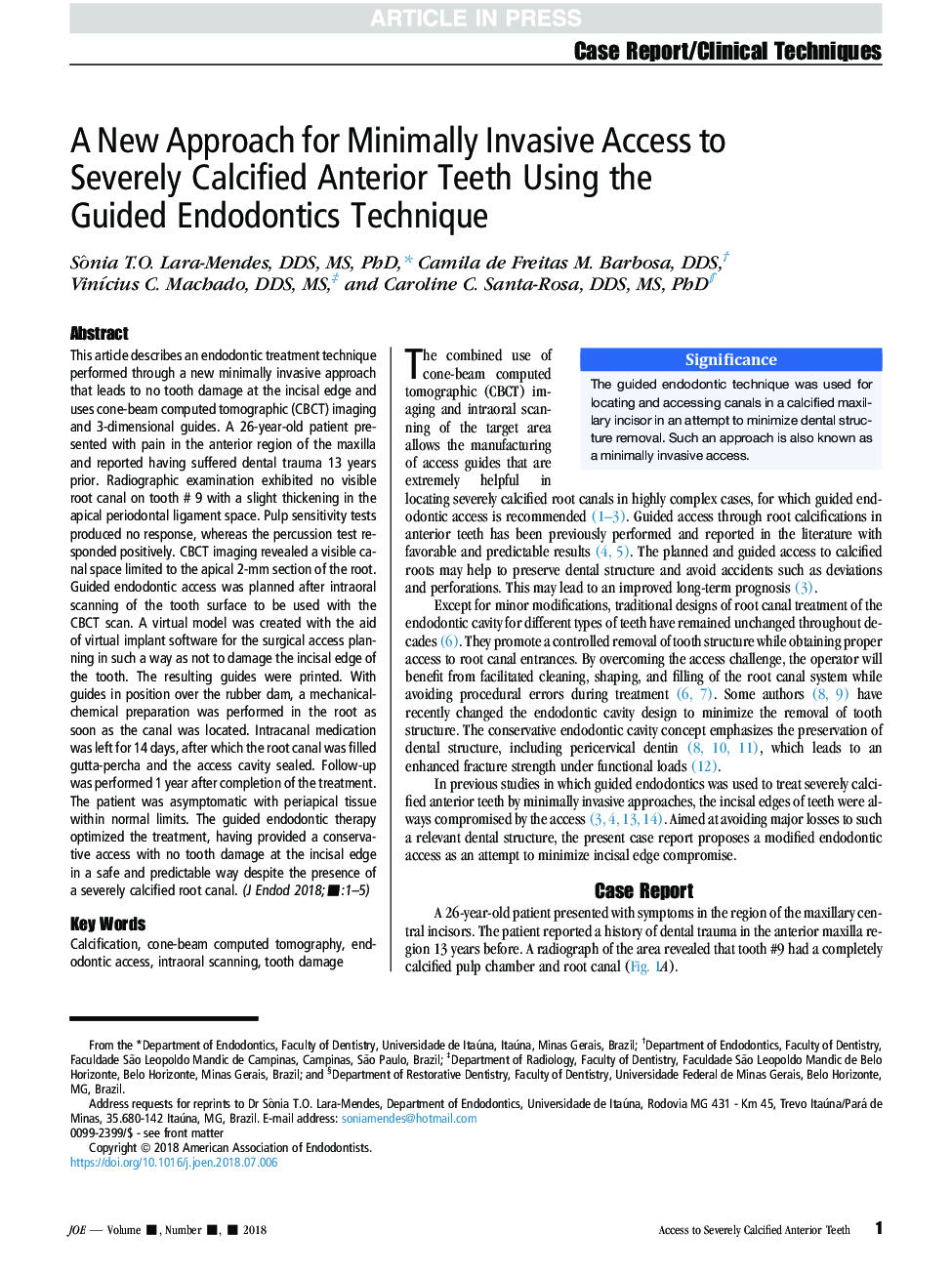| Article ID | Journal | Published Year | Pages | File Type |
|---|---|---|---|---|
| 10216263 | Journal of Endodontics | 2018 | 5 Pages |
Abstract
This article describes an endodontic treatment technique performed through a new minimally invasive approach that leads to no tooth damage at the incisal edge and uses cone-beam computed tomographic (CBCT) imaging and 3-dimensional guides. A 26-year-old patient presented with pain in the anterior region of the maxilla and reported having suffered dental trauma 13Â years prior. Radiographic examination exhibited no visible root canal on tooth # 9 with a slight thickening in the apical periodontal ligament space. Pulp sensitivity tests produced no response, whereas the percussion test responded positively. CBCT imaging revealed a visible canal space limited to the apical 2-mm section of the root. Guided endodontic access was planned after intraoral scanning of the tooth surface to be used with the CBCT scan. A virtual model was created with the aid of virtual implant software for the surgical access planning in such a way as not to damage the incisal edge of the tooth. The resulting guides were printed. With guides in position over the rubber dam, a mechanical-chemical preparation was performed in the root as soon as the canal was located. Intracanal medication was left for 14Â days, after which the root canal was filled gutta-percha and the access cavity sealed. Follow-up was performed 1Â year after completion of the treatment. The patient was asymptomatic with periapical tissue within normal limits. The guided endodontic therapy optimized the treatment, having provided a conservative access with no tooth damage at the incisal edge in a safe and predictable way despite the presence of a severely calcified root canal.
Related Topics
Health Sciences
Medicine and Dentistry
Dentistry, Oral Surgery and Medicine
Authors
Sônia T.O. DDS, MS, PhD, Camila de Freitas M. DDS, VinÃcius C. DDS, MS, Caroline C. DDS, MS, PhD,
